#AM radio
Text
If there's one thing that "Project Zomboid" has taught me about human nature and what resources people are desperately in need of during a zombie apocalypse, it's entertainment. It's very easy after the radio/television broadcasts go out to get bored and depressed while you're trying to rebuild humanity, because most of your alone time is spent doing mundane grunt work that's essential. So, as part of those grandiose survival plans people make for fictitious zombie apocalypse scenarios, my plan is to set up shop somewhere safe and set up a radio station over AM radio.
I'd try to keep it lighthearted and fun, too, since there's already probably an emergency broadcast station in operation. I'd have regular humorous weather updates, play themed music each night, take in radio calls from folks who just want to chat, and offer encouragement to people in the zombie-infested countryside. "It's been fantastic spending this evening with you folks, but it's about time we head to bed at Big Burr Radio. This has been Papa Bear with my husband, the Phox, saying, g'night folks. Stay safe, stay sane, and look out for each other because each other is all we've got. Love you!"
714 notes
·
View notes
Text
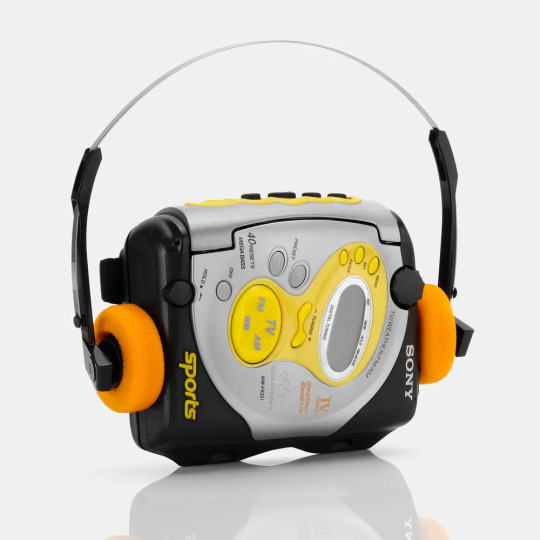
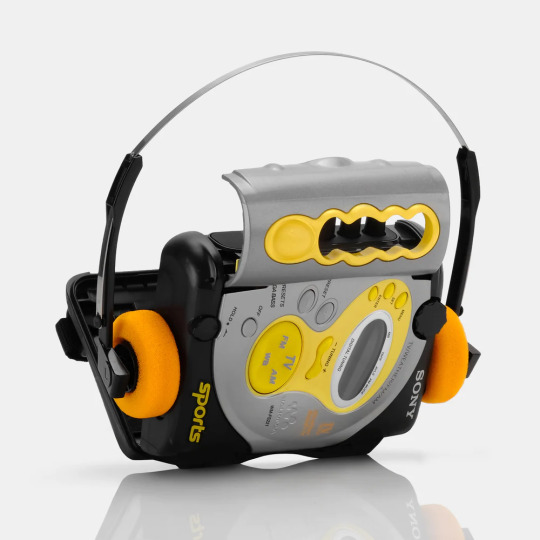


Sony Sports Walkman WM-FS221 AM/FM Portable Cassette Player
2001
#2001#2000s#01#00s#am radio#cassette player#cybercore#cyber y2k#design#fm radio#kaybug#photography2k#photography#photos#sony#sony walkman#sony sports walkman wm-fs221#tech#technology2k#technology#y2kcore#y2kore#y2k aesthetic#y2k design#y2k futurism#y2k
58 notes
·
View notes
Text

1970 Sony TR-4100 |2023|
#illustration#sony#solid state#tr-4100#transistor radio#radio#am radio#audio#1970#vintage technology#pop art#2023
25 notes
·
View notes
Text
u dont like shortwave radio? bla bla bla?
#only real ones will understand#radio#shortwave#shortwave radio#numbers stations#AM radio#shortwave broadcasting
14 notes
·
View notes
Text
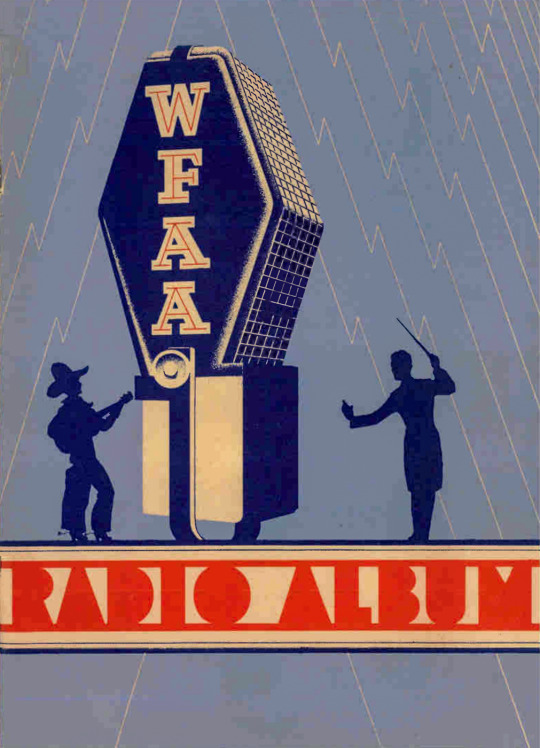
WFAA 570 on your radio dial - 1936.
13 notes
·
View notes
Text

#QSLfriday This postcard, signed by the station's chief engineer, was received by a radio enthusiast in Bellevue, WA, in 1959. This station, originally owned by a local furniture company, was sold to The Birmingham News in 1932, and the call sign was changed. This call sign stood for "South’s Greatest Newspaper," a tribute to The Chicago Tribune’s WGN, whose call sign stands for "World’s Greatest Newspaper." (Wikipedia)
Committee to Preserve Radio Verifications | Tumblr Archive
11 notes
·
View notes
Text
youtube
when I was growing up, the radio always sounded exactly like this
7 notes
·
View notes
Text

Have a Nice Day: The 1970s
“Alone Again (Naturally)” (1972)
Gilbert O’Sullivan
Epic Records
(Written by Gilbert O’Sullivan)
Highest U.S. Billboard Chart Position – No. 1
To think that only yesterday
I was cheerful, bright and gay
Looking forward to who wouldn't do
The role I was about to play
But as if to knock me down
Reality came around
And without so much as a mere touch
Cut me into little pieces
Leaving me to doubt
Talk about, God in His mercy
Oh, if he really does exist
Why did he desert me
In my hour of need
I truly am indeed
Alone again, naturally.
– Gilbert O’Sullivan
Welcome to my childhood. “Alone Again (Naturally)”, certainly one of the most depressing songs ever recorded, was my first most favorite record ever. I remember it playing at the Boys Club of Savannah over the loud speaker in the gym along with all of the other groovy, long-haired country-tinged soft rock oozing out of the airwaves at the time. It is a song about a young man being jilted at the altar, swearing to himself he will throw himself off a tall building soon, and then about the unexpected death of a parent and a mother mute with grief…and I loved it. I would wander around the Boys Club with my own mute, melancholic fantasies of sorrow and loneliness, oblivious that most boys my age were still into Snoopy and Bubblegum music. Listen: it was the 70s—no subject seemed off limits.
The open of the song is Sullivan’s signature broken piano style, something that sounds like a mistake but by being repeated within the song ends up as a very effective method of expressing brokenness itself. Gilbert was Irish-born to a working-class family and moved to England as a child; his actual mother ran a sweet shop and his father was a butcher. He was a natural musician, and intent on pop success he invented a Chaplin-esque, waifish turn-of-the-century affect: suspenders, shorts, a tilted cap. By the time of “Alone Again…” he switched to an even more ridiculous 1920’s college prep look, sporting V-neck sweaters with a large silly G pasted on them. No matter; the songs spoke for themselves, little dour slices of life with old-fashioned melodies and a vintage feel, and proved enormously successful: he was the top star of 1972.
I mention this because it feels as though Gilbert’s catalogue is as lost as his records once sounded. In America he is rarely mentioned (or so it seems to me) even though he had 3 top ten hits in the US (a second single, “Clair”, reached no.2 that same year, followed by a slightly funkier song in 1973 entitled “Get Down” that made it to No.7). He was Grammy-nominated that year for Song of the Year and Record of the Year, along with Roberta Flack (for “The First Time Ever I Saw Your Face”) which she won (deservedly) for both. It is astonishing to my adult self that these two records exist in the same universe, much less the same year, Roberta’s record still feeling endlessly modern and fresh, and O’Sullivan’s feeling like it belongs in the Norton Anthology of English Literature instead.
This is not to diminish Gilbert in the least (he is still alive and working and, of course, very famous in Japan, like all the major/minors are). If I happen to hear this record it is just as wonderful as it ever was, and it will still fill the 7-year-old in me with those wistful feelings of chances lost and memories of being jilted, even though my only real tragedies up to that point consisted of finding that the milk had run out for my Cap’n Crunch cereal that morning. And yet I would still find myself wistfully kicking around the empty basketball gym, avoiding all of the other rowdy boys, just waiting around to see what the 70s had in store for me, and surreptitiously absorbing all of those groovy tunes ricocheting across the gym.
_
“Alone Again (Naturally)”, besides being a well-covered and highly regarded song (Nina Simone recorded a version), is notable for another inflection point in history: in 1991 O’Sullivan sued rapper Biz Markie for prominently using the piano break in the Hip hop song “Alone Again”. Gilbert won 100% of the royalties for the rap song, and this would help to establish the industry standard for clearing (and paying for) any sample by another artist, which has changed the music business to this day, for better or for worse.
8 notes
·
View notes
Text
How did Talk Radio Get So Politically Lop-Sided?
Bringing the extreme into the mainstream and making it look organic.
How did the right get their vice grip of the airwaves, all the while arguing that they were being silenced and censored by a liberal media? This week, we look at the early history of American radio to reveal that censorship of far-right and progressive voices alike was once common on radio. And reporter Katie Thornton explains how, in the post-war and Civil Rights period, the US government encouraged more diverse viewpoints on the airwaves — until it didn’t.
Plus, the technological and legal changes that led to conservative talk radio hosts like Rush Limbaugh taking over the airwaves. X
#politics#talk radio#fairness doctrine#republicans#telecommunications act#white supremacy#podcasts#conservatism#wxur#fcc#religious reich#pat robertson#am radio#christian nationalism#rush limbaugh#radio#media consolidation
17 notes
·
View notes
Text
Figure 20.3 summarises the wavelengths and frequencies of some regions of the electromagnetic spectrum. (...) The infrared region of the electromagnetic spectrum (figure 20.3) covers the range of wavelengths from 7.8 × 10-⁷ m (just longer than the visible than the visible region) to 2.0 × 10-³ m (just shorter than the microwave region).
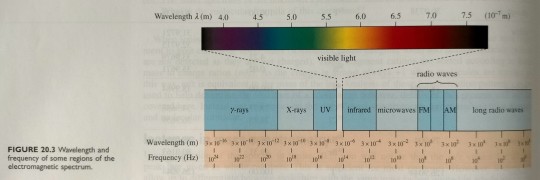
"Chemistry" 2e - Blackman, A., Bottle, S., Schmid, S., Mocerino, M., Wille, U.
#book quotes#chemistry#nonfiction#textbook#wavelength#electromagnetic spectrum#gamma rays#x rays#ultraviolet light#uv light#visible light#infrared light#microwaves#radio waves#fm radio#am radio#long radio waves#frequency
2 notes
·
View notes
Text



Sony Walkman WM-FX195 AM/FM Portable Cassette Player (1999)
#99#90s#1999#1990s#am radio#cassette player#cybercore#cyber y2k#design#fm radio#kaybug#silver#sony#sony walkman#sony walkman wm-fx195#tech#technology2k#technology#walkman#y2kcore#y2k aesthetic#y2k design#y2k futurism#y2k nostalgia#y2k
26 notes
·
View notes
Text
AM-Detection -the not easy way
Sometimes quite simple things can be a real nightmare if you take a closer look. One of those is AM detection. Your worst enemies are distortion and fading (the latter results in the first). The AM-Detector is only one little part in a receiver, exactly that kind of part usually no one thinks about. "It works, so what should be wrong with?" -a lot and sometimes there's more wrong than right.
A good part of that distinctive AM-Sound we all know is because of the Detector, even under the best conditions. If you're listen to shortwave or the broadcast band during the night then you also have to cope with Fading. Shouldn't be that problem, the automatic gain control takes care of that, right? Ehmmm... Yes. Sometimes. Why the sound gets so distorted when the signal goes down? Just because it's very often 'Selective Fading' and not just Fading -and your Detector doesn't like it.
Really good AM-Reception has a lot in common with High-End-Audio: if it shall work well EVERYTHING has to be well. So let's just talk a bit about Detectors...
Basically the Detector just splits the Audio Signal from the received and amplified Signal. Sounds easy and in fact it is -up to some degree. If you want more than this things getting complicated -really complicated. In at least 999 out of 1000 AM-Receivers for the Detector a small circuitry called 'Envelope Detector' is used, it's just a small Diode (Tube or Semiconductor), a few Resistors and small Capacitors. So, from the view of the Development Engineer: just put half a dozen cheap Components together and Bob's your Uncle. To tell the Truth: compared to the expense that thingy works surprisingly well. Because of this it's the 'Gold Standart' for this task since at least the mid 30s. But as good as it is, it absolutely has it's Limitations. Up to about 15...30% Distortion at a 100% Modulation Level is one, the inability to detect a signal with different sidebands (>selective Fading!) properly another.
To overcome these Limitations a thing named 'Synchronous Detector' was developed many Decades ago. This kind of Circuit has many advantages over the Envelope Detector, but to make one the complexity and the component count of those is just hilarious compared to the Envelope Detector. If only the result counts and nothing else: that's the way to go. We'll talking later how this exactly works, but before this you have to know that in a receiver with a Synchronous Detector also an Envelope Detector is needed: just for tuning in. So first we'll have a closer look how we can get the most ideal Envelope Detector.
Basically it's quite simple: want to have low overall Distortion? Feed it with at least 'a few' volts RF at it's input for having a high ratio between the input voltage and the 'forward voltage' of the Diode. Want low Distortion at low modulation levels? Use a Diode with low Impedance and a load Resistor with a value as low as possible. Want low Distortion at high modulation levels? Just make the input Impedance of the following Stage as high as possible for having the highest possible Ratio between the Resistance of the Load Resistor and the input Impedance of the following Stage.

The Receiver i wanted to use (R+S EK07) has an IF output, meant for exactly such things, the IF Level there's about 250mVpp @ 300kHz. So having everything above in mind -and just adding a 700mVpp IF output for the Synchronous Detector and an additional AGC-Circuitry, then we're coming to this:

The EK07 is a fully tube equipped receiver, so i also want to use tubes as far as possible and -like in the EK07- in a way which guarantees 10k's of Service hours. If at one point a Semiconductor may perform muuuch better -ok, so then. First of all i want high performance. So what tubes may perform optimal here?
For the first IF-Amp (IF1) not much is needed, the Gain is only about 3, the output voltage low and besides that it has to be an remote-controlled type. Selectivity isn't needed or desired, so no IF-Can, only a Broad-Band setup. Nearly every IF-Tube with a Transconductance of at least about 3000mhos (3mA/V) would do that job. To have better performance i took the EF805s, which is a Special Quality Version of the EF85 -or 6BY7.
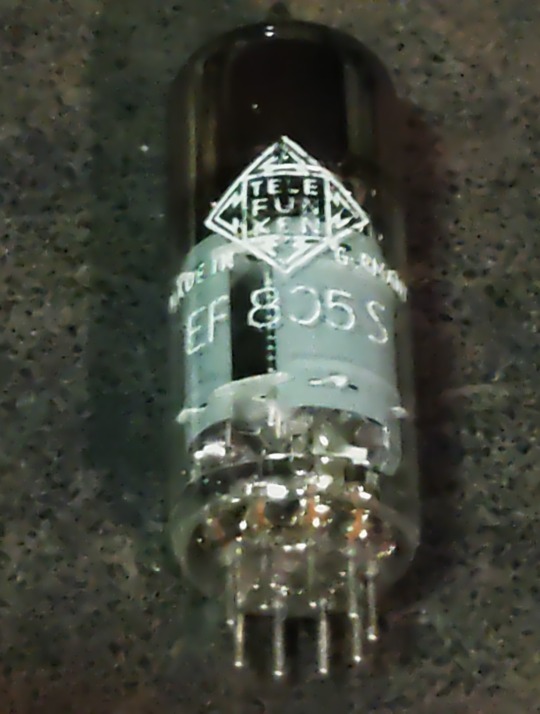
Transconductance is about twice what's needed, so we'll have Gain to spare, anyway, it's getting controlled with the AGC so it will work with less current which adds greatly to the service life. So no problems here.
For the second IF-Amp (IF2), things aren't exactly that easy. First: the output for the Synchronous Detector is placed between both Amps and has to deliver a constant voltage, so for the 2nd IF we need an Amplifier with an fixed Gain. A STABLE fixed Gain over long time periods. Further we want to have a relatively high and undistorted output voltage which calls for quite a bit of gain. Wait: there was also that thing with the low-value Load Resistor in the detector itself -so we also need a quite reasonable amount of output power from this stage. In Addition we want to have a stable gain for a time as long as possible. A IF-Tube like the EF805s could also handle this, but then we have to 'beat the crap' out of this thing. Not a good start for a long and stable service life, also not with Special Quality Tubes.
Because of all that my choice was a kinda 'special'-Special-Quality type: the E81L.

The datasheet calls this a 'Long range, Special Quality Tube for the use in Telephone Equipment'. Telephone Equipment? Like an answering machine?? Nope, by far not. Back in these days telephone companies needed to have Amplifiers for pushing the calls through loooong cables for long range service. But: this was all multiplex service, so they pushed dozens and dozens of calls simultaneously through one pair of wires or a Coax. The same way like for cable TV. THIS was these bulbs were meant for. For this task every company employed tens of thousands of such tubes 24/7/365. If a single one failed -most likely somewhere in nowhere of course- they had a problem. So they absolutely had to last.
These little bulbs are designed for about 4.5W plate dissipation at 20mA, the Transconductance is 11000mhos (11mA/V)-so it's about twice an usual IF Tube in every respect. So that's exactly what's needed here: a tube especially designed to last, quite powerful, so we can drive it with comfortable low settings, enhancing service life and stability much further.
Because we need some amount of power the usual Broad-Band Amplifier arrangement (still: selectivity is not wanted or desired) with just a plate Resistor isn't good here, a suitable inductor works way better here. This has the further advantage that we can build it with a Tab like an Autotransformer -we don't need that much voltage it could deliver with that inductor by far, so this adds further to a good SNR and lower output Impedance. 300kHz trough a transformer? Yep, no problem. Just use the right core. Here it's not a laminated iron core but a ferrite one instead. Cause it's a single-A Amplifier of course we must add an air-gap, preventing saturation.
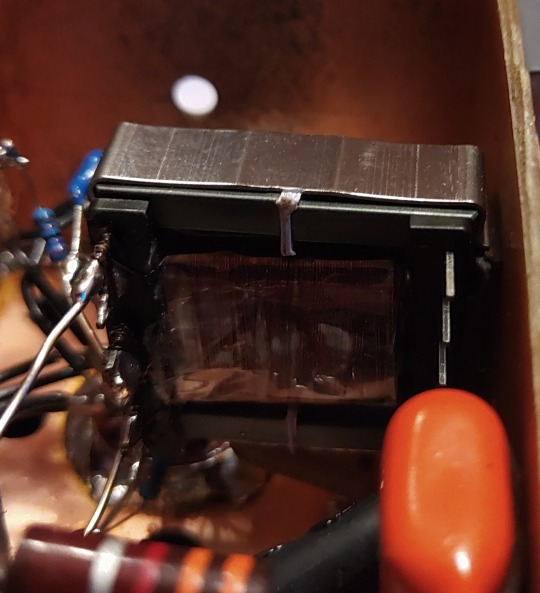
In a penthode stage the gain depends nearly exclusively on the Transconductance of the tube used, have to much just cut it down. The E81L has a quite high transconductance, about 3 times more than needed -and in the same order than big output tubes like the 6550, EL34 or 6CA7. For cutting that down to the desired level just put a Resistor or Pot in series to the bypass cap of the cathode Resistor. This acts as an series feedback so it also enhances linearity and long time stability greatly. Yap, i thought quite a while about which tube i should use here.
So after all Amplification is done now, we need a Diode for the Envelope Detector. Back in the Octal-Days this was the 6H6 / EB34, later in the Miniature-Days the 6AL5 / EAA91, both with two separate diodes in one bottle (or Can for the 6H6). These were not A DIODE, these were THE DIODE, so there's not much to choose from. Both are kinda close to each other, but are these ideal for what we want? They both can handle a reverse voltage of several hundreds of volts, so waaaay more than we need here. Both having a Plate Resistance of 600-something Ohms per System which is quite low -could be lower, even with both Systems in parallel. Of course these would be work well, no doubt about. But still.... Hey, this should be High-end so we're whining here at a very high level!
Basically we can use EVERY TUBE as a diode: just take the control grid as Anode, the Cathode as what it is and everything else as Shielding. We don't need hundreds of Volts reverse Voltage, nor high current, so also no big Cathode. We only want to have an internal Resistance as low as possible, so a close spacing between the Grid and the Cathode. This calls for a small Tube with a high Gm (or Transconductance) -like the 6AK5 / EF95. Can it handle the reverse voltage we need? Datasheet says 50V, so at least twice of what's needed. So just take one, put some current trough and take the voltage drop. Result: 210 ohms -way less than that what one of the double-diodes would provide, even with both Systems in parallel. Fits very well!

This is the soviet-military version of the 6AK5W / E95F. Special Quality. See these 'trenches' in the bulb? And the microscopic rivets holding the Plate together? The Soviets literally ruggedized the heck out of this tube! Why? Just because they used it widely in their Fighter Planes, ICBM's, Tanks and so on. Doubts about the soviet built quality? Hey, they wanted to win WWIII with them -so: nope. If you ever saw a ruggedized tube: this it is.
After the Detector itself is done, we come to last part of our little contraption: the buffer Amplifier. At the output of the Detector we have the AF as well with the overlayed AGC-Voltage and we want to have an input Impedance as high as possible for the Buffer Amp. Voltage Gain isn't needed -we have plenty of both from the Detector- so we just can use a Cathode Follower for the buffer. Ideally the Buffer should handle both voltages simultaneously, but then the output will be negative with respect to Ground. How to....? Simple: just put that thing between a positive and a negative supply rail. Then the output can swing freely between every positive or negative Potential as desired. Further: we don't need a Grid Resistor! The Grid just follows any voltage swing of the Detector, this also adds to a high input Impedance.
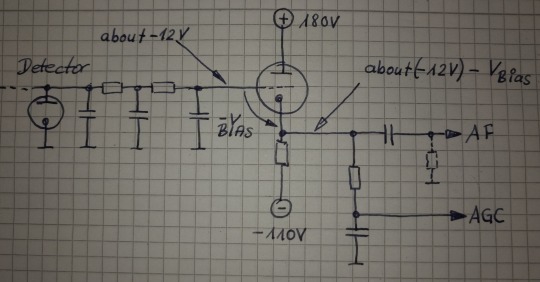
This Circuit will provide us a very high input Impedance, but this is High-End! So: what tube will be the best for? Because of the lack of any Grid Resistor the input Impedance depends now largely on the contact potential of the grid. So we want a tube with low contact potential which calls for a tube with a low Transconductance. Further we want a tube which needs only a low bias voltage for it's Grid, 'cause we'll loose any bias-volt in our AGC-Output voltage. This calls for a tube with an high Gain. Low contact potential and low Transconductance? High Gain?? That's the 12AX7 / ECC83! Ok, it's of course a double Triode, but we still can use the second system for something else -like for the Line-Output Amp. In that Stage there's not much needed so it also will perform well enough there -we're still talking about AM!
So let's put everything neatly together, adding adequate shielding and so on -and we get this:

So now it's time to have a closer look we did everything right. Just put a 300kHz-Carrier in, 100% modulated with a triangle-signal. We should get a perfect Triangle at the AF-Output -if physics are with us. Due to the Triangle Signal any Distortion can easily be spotted on the Scope.
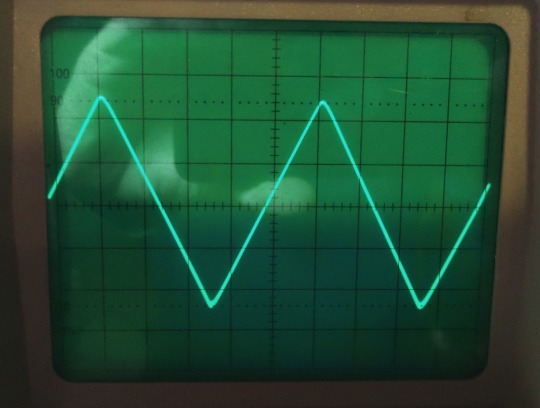
Looks promising! But somehow... Is the beam defocused? Let's take a very close look:

No, it's not. Those are just the very small remnants of the Carrier, so we actually have a look how the Detector works on a nearly 'microscopic' Level. I could take a measurement how much distortion we have left, but the Flanks of the Triangle are perfectly straight, so the Distortion will be really small -like 1% or so worst case. At least for the moment it's not worth the Effort. Compared to the usual 15...30% Distortion at a 100%-Modulation level this works really well, there's no doubt about.
So finally: we wanted to have a Envelope-Detector as good as possible and here we are. Ok, tbh it's better than needed, cause finally the REAL Detector will be a synchronous one. So why i took this that far? Easy: because of mental peace. Now i never have to think about if that part of the whole final thing could work better. As i said before: it's High-End.
Will update you if the next module is ready. But i fear this here was just the more easy part of the whole thing. From now on things may get a bit more tricky...
2 notes
·
View notes
Text

Read the remaining facts, plus myths, quotes, faqs and an epic quiz at: https://1mfacts.com/untold-tales-50-startling-radio-facts-that-will-mesmerize-you/
2 notes
·
View notes
Text
youtube
You know it’s Summer in Australia when the Cricket starts on the ABC radio.
3 notes
·
View notes
